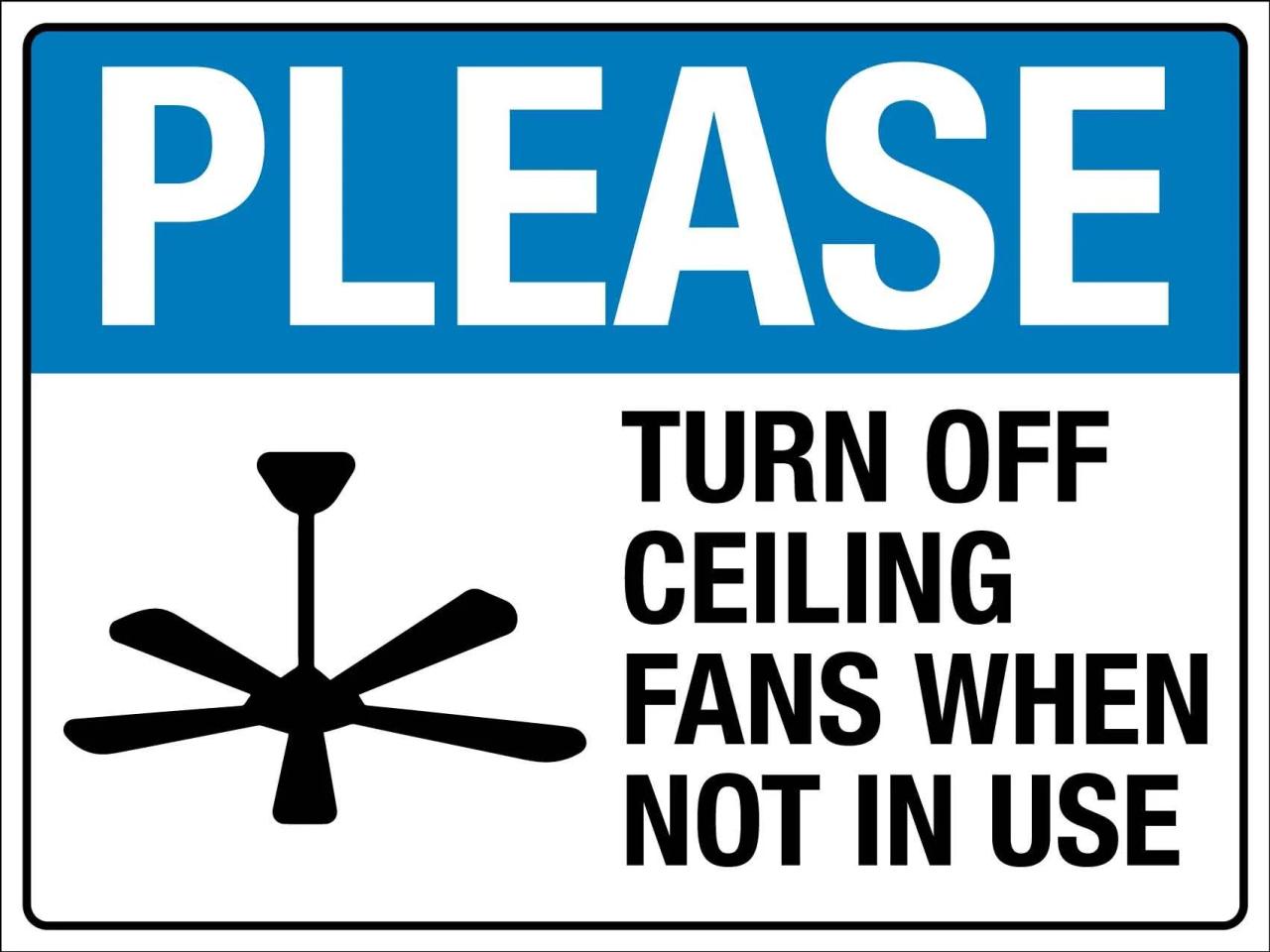Fix your rounded shoulders with a mat and a door frame. This post Artikels simple, effective exercises you can do at home to improve posture and alleviate shoulder pain. We’ll cover everything from understanding the causes of rounded shoulders and their health implications, to specific exercises using a mat and door frame, progression plans, safety precautions, and tips for maintaining good posture.
Discover how accessible and convenient these exercises can be, with clear instructions and modifications for different fitness levels. No gym membership required!
Introduction to Rounded Shoulders
Rounded shoulders, a common postural issue, involve a forward hunching of the shoulders, often accompanied by a rounding of the upper back. This posture, frequently seen in individuals who spend extended periods sitting, can lead to a variety of health concerns. Understanding the causes, implications, and benefits of correction is crucial for maintaining overall well-being.This forward slumping of the shoulders can be attributed to several factors, including prolonged sitting, poor posture habits, muscle imbalances, and certain medical conditions.
Addressing these underlying causes is often a key component of successful shoulder posture correction.
Causes of Rounded Shoulders
Prolonged periods of sitting, especially in positions that encourage slouching, can lead to weakened back and shoulder muscles. This weakness allows the shoulders to round forward. Furthermore, repetitive motions and activities that involve sustained forward head postures can contribute to this issue. Muscle imbalances, where certain muscles are stronger than others, also play a significant role. A common example is when the chest muscles are tighter than the back muscles.
This imbalance pulls the shoulders forward.
Health Implications of Rounded Shoulders
Rounded shoulders can negatively impact various aspects of health. Neck pain is a frequent consequence due to the strain on the neck muscles. Back pain, often in the upper back, is another common result of this posture. Headaches may also arise as a result of the strain on the neck and surrounding muscles. Furthermore, rounded shoulders can affect breathing mechanics, leading to reduced lung capacity and potential respiratory issues.
The strain on the shoulder joints can also increase the risk of shoulder pain and impingement.
Benefits of Correcting Rounded Shoulders
Correcting rounded shoulders can lead to significant improvements in overall health and well-being. Improved posture can enhance confidence and self-image. The relief from pain in the neck, back, and shoulders is a significant benefit. Better breathing mechanics can lead to increased lung capacity, which can have a positive effect on physical performance and energy levels. By strengthening the supporting muscles of the back and shoulders, posture correction can reduce the risk of future pain and injuries.
Using a Mat and Door Frame for Shoulder Exercises
The use of a mat and a door frame provides a convenient and effective way to perform exercises targeting shoulder muscles. This method leverages the door frame for resistance and stability during exercises. This approach is accessible, cost-effective, and requires minimal equipment, making it suitable for a variety of individuals.
- Exercise Examples: Door frame exercises offer a range of exercises for targeting the muscles responsible for maintaining good posture. Examples include shoulder blade squeezes, rows, and various stretches.
- Accessibility and Cost-Effectiveness: A mat and door frame are readily available resources. The exercises require minimal investment, making them accessible to individuals with limited budgets.
- Convenience: These exercises can be performed at home, without the need for a gym or specialized equipment. This flexibility is highly beneficial for those with busy schedules.
Mat and Door Frame Exercises
Harnessing the simplicity of a mat and a door frame, you can effectively target your shoulder mobility and posture. These exercises are adaptable to various fitness levels, making them ideal for both beginners and seasoned practitioners. They provide a convenient and accessible way to combat rounded shoulders, improving your posture and overall well-being.These exercises leverage the stability of a door frame and the versatility of a mat to create a comprehensive workout routine.
They are designed to be performed safely and effectively, focusing on specific muscle groups to enhance shoulder mobility and posture.
Working on fixing those rounded shoulders with a mat and a door frame is a great way to improve posture. But, let’s be honest, sometimes a healthy body is about more than just physical exercises. Think about incorporating some delicious, easy-to-prepare foods into your diet, like the ones in this list of 10 great weight loss foods that are really easy prep.
These will help fuel your body for those shoulder-strengthening workouts, and the whole process will be much more enjoyable! Ultimately, a holistic approach to well-being, combining both physical and dietary elements, is key to achieving a strong and healthy posture.
Doorway Pec Stretches
Doorway stretches are a great way to increase the flexibility of your chest muscles. By placing one arm on the door frame and leaning into the stretch, you can gently open your chest and shoulder. This targeted stretching helps alleviate tightness and tension in the pectoral muscles, which often contribute to rounded shoulders. Remember to maintain a straight back and avoid arching your lower back.
Working on posture is key, and fixing those rounded shoulders with a mat and a door frame is a great start. But, if you’re looking for a more holistic approach to well-being, maybe you’re ready to focus on your love life too. Check out these 7 ways to find your new true love this year 7 ways find your new true love this year.
No matter which path you choose, remember that taking care of yourself, both physically and emotionally, can lead to a more fulfilling life, and that includes the importance of good posture like you can achieve with a mat and a door frame exercise routine.
Wall Angels
Wall angels are an excellent exercise for improving shoulder mobility and strengthening the muscles around your shoulders. By standing facing a wall with your arms extended, and slowly moving your arms in a wide arc, you engage the shoulder muscles in a controlled manner. This exercise enhances shoulder joint flexibility, which is crucial for preventing rounded shoulders. A smooth, controlled movement is key to maximize the benefit.
Modifications for Different Fitness Levels
For those new to these exercises, start with shorter durations and fewer repetitions. Gradually increase the intensity as you gain strength and endurance. For instance, beginners can perform doorway pec stretches for 15-20 seconds on each side, progressing to 30 seconds as they improve. Similarly, wall angels can start with 5-10 repetitions, gradually increasing to 15-20 as strength and flexibility improve.
Exercise Comparison Table
| Exercise | Targeted Muscles | Execution | Modifications |
|---|---|---|---|
| Doorway Pec Stretch | Pectorals, shoulders | Stand in doorway, one arm extended on frame, lean into stretch. | Vary arm distance for intensity. Use a wall instead of a door frame for a less intense stretch. |
| Wall Angels | Shoulders, upper back | Stand facing a wall, arms extended, move arms in a wide arc. | Use resistance bands for increased intensity. Perform the exercise with one leg slightly elevated for a more challenging variation. |
| Door Frame Shoulder Rotations | Rotator Cuff Muscles, Shoulders | Place one hand on the door frame and the other on a hip. Gently rotate your shoulders forward and backward in a controlled manner. | Gradually increase the amount of rotations performed and the resistance. |
Exercise Progression and Duration
Consistency is key when working on posture correction, and a gradual progression is essential to avoid injury and ensure long-term results. Jumping into advanced exercises without proper preparation can lead to setbacks and frustration. This section details a structured approach to building strength and flexibility, allowing you to gradually challenge yourself and achieve lasting postural improvements.
Exercise Progression for Beginners
For beginners, starting with a manageable routine and gradually increasing the intensity is crucial. Focus on mastering the form and feeling the stretch or contraction in the target muscles before adding more repetitions or sets. Begin with a frequency that feels sustainable and enjoyable. Listen to your body and adjust as needed. This approach fosters a positive experience and increases the likelihood of long-term adherence to the exercise program.
Recommended Exercise Duration and Frequency
The duration and frequency of each exercise are tailored to accommodate individual needs and progress. Starting with a shorter duration and less frequent sessions allows the body to adjust and prevents potential overtraining. As you become more comfortable and see improvements, you can gradually increase the duration and frequency. Remember, quality over quantity is key in this process.
Exercise Progression Table
| Exercise | Duration (minutes) | Frequency (days/week) | Progression Levels |
|---|---|---|---|
| Doorway Pec Stretch | 1-3 minutes per side | 2-3 times/day | Increase hold time, add reps. For example, start with a 1-minute hold on each side, then gradually increase to 2 minutes, and finally to 3 minutes. As strength and flexibility improve, add repetitions to the stretch. Begin with 3 repetitions and gradually increase to 5-7 repetitions. |
| Wall Angels | 3-5 minutes | 2-3 times/week | Increase reps and sets. Start with 2 sets of 10-12 repetitions. Gradually increase the sets to 3 or 4, and the repetitions to 15-20. |
Safety Precautions and Considerations
Proper form and mindful execution are crucial when performing exercises, especially those involving a mat and door frame. Ignoring safety precautions can lead to injuries that hinder your progress and potentially cause long-term problems. Understanding potential risks and knowing how to modify exercises based on your body’s needs is paramount to a safe and effective workout routine.
General Safety Tips, Fix your rounded shoulders with a mat and a door frame
Prioritizing safety is fundamental to any exercise program. Before starting any new exercise routine, consult with your physician, especially if you have pre-existing medical conditions. Always warm up your muscles before engaging in any activity to prepare your body for the workout. Listen to your body; if you feel pain, stop the exercise immediately. Never push yourself beyond your physical limits.
Maintain a comfortable pace, and gradually increase the intensity of your workout over time. Ensure the exercise area is free of obstacles to prevent tripping or falls. Using appropriate equipment, such as a sturdy mat and a stable door frame, is critical for avoiding accidents. Maintain good posture and focus on proper form throughout the exercise.
Potential Injuries and Prevention
Common injuries associated with exercises using a mat and door frame include strains, sprains, and musculoskeletal issues. Strains result from overstretching or tearing muscles, while sprains involve ligament damage. Musculoskeletal issues can stem from poor posture, improper form, or repetitive movements. To prevent these injuries, maintain proper form throughout each exercise. Warm up before each session to prepare your muscles and joints.
Gradually increase the intensity and duration of your workouts. Listen to your body and stop if you feel any sharp pain. Choose a mat that provides adequate support and cushioning. Ensure the door frame is sturdy and secure to avoid any instability. Use light resistance and progressively increase it as your strength improves.
Modifying Exercises for Individual Needs
Adjusting exercises to suit individual needs is crucial for maximizing benefits and minimizing risks. Individuals with limited mobility or flexibility may need modifications to make the exercises accessible and safe. For example, if you have limited shoulder mobility, you may need to modify the exercises to focus on a smaller range of motion. Individuals with pre-existing injuries or medical conditions should consult their physician before attempting any new exercises.
Modifying exercises for your specific needs may include using lighter weights or resistance bands, or adjusting the angle or duration of the exercise. For instance, if you have neck pain, you may need to modify the door frame exercises to avoid placing excessive stress on your neck. Consider modifying the exercises based on your individual limitations, like joint issues or prior injuries.
Contraindications for Certain Exercises
Certain exercises may be contraindicated for individuals with specific medical conditions or injuries. For example, individuals with carpal tunnel syndrome may need to avoid exercises that place excessive pressure on their wrists. Exercises that involve excessive stretching or twisting may be unsuitable for individuals with back problems. Exercises that put undue stress on the shoulders should be avoided by individuals with shoulder impingement.
Consult with your physician to determine which exercises are safe for you, given your individual circumstances and health conditions. Be mindful of any discomfort or pain during the exercise, and modify the exercises or discontinue them as necessary.
Illustrative Examples
Getting your shoulders back into alignment is easier with visual examples. Seeing the proper form in action can make a huge difference in understanding the nuances of each exercise. Let’s dive into some detailed descriptions.
Wall Angel
The wall angel is a fantastic exercise for stretching and strengthening the muscles that support your posture. Proper form ensures that you’re targeting the correct areas and minimizing the risk of injury.Imagine yourself standing a few inches from a wall, with your back completely flat against it. Your heels should be about a foot from the wall. Your arms should be straight, parallel to the floor, and your palms facing each other.
Slowly, you’ll raise your arms overhead, maintaining contact with the wall. Keep your shoulders relaxed and avoid hunching your back. Your chest should stay open throughout the movement. Once your arms are overhead, slowly lower them back down, keeping your back flat against the wall and avoiding any jerky movements. This controlled, smooth motion is crucial.
Repeat this process several times, maintaining good posture and breathing normally. This exercise targets the shoulder blades and upper back, helping to open the chest and correct rounded shoulders.
Doorway Pec Stretch
The doorway pec stretch is a great static stretch that targets the chest muscles, helping to counteract the forward rounding of the shoulders. Maintaining proper alignment is vital for achieving the desired stretch and preventing injury.Stand in a doorway, feet shoulder-width apart. Place one arm on the door frame at shoulder height, with your elbow bent at a 90-degree angle.
Keep your shoulder relaxed and avoid hunching. Lean into the stretch, feeling the stretch in your chest. You should feel a gentle stretch in your pecs and front shoulder. Maintain this position for 20-30 seconds, and then repeat on the other side. It’s important to keep your back straight and avoid arching your lower back.
Working on fixing those rounded shoulders? A simple mat and door frame can go a long way. It’s all about mindful movements, and incorporating that kind of focused effort into your daily routine can be really beneficial. This aligns nicely with the principles in Richard Hamming’s 14 lessons for success scientist, which emphasizes precision and continuous improvement.
Ultimately, consistent practice with these simple shoulder exercises, like those using a mat and door frame, will lead to better posture and overall well-being.
This helps maintain proper posture and maximizes the stretch in the chest muscles.
Mat Selection
The type of exercise mat can influence your comfort and safety during these exercises.
- Yoga mats are typically made of non-slip materials, providing good grip and cushioning. Their thickness and texture provide a good surface for exercises like the wall angel and doorway pec stretch, especially when the floor is hard or uneven. Their cushioning helps reduce the impact of the movement.
- Foam rollers, though not primarily designed as exercise mats, can be helpful for self-myofascial release, which can aid in releasing tension in the shoulders and back. However, for the exercises described, a dedicated exercise mat is generally preferred for its stability and support.
- Exercise mats with a non-slip surface are particularly beneficial for maintaining stability during movements like wall angels and doorway stretches. They prevent slipping, reducing the risk of injury.
Door Frame Considerations
The structural integrity of the door frame is important for safe exercise execution.
- Solid door frames constructed of strong materials are ideal. They provide stability and prevent the door frame from shifting or bending during stretches, ensuring a safe exercise environment.
- Doorway dimensions should be suitable for the exercise. The doorway should be wide enough to accommodate the full range of motion required for the doorway pec stretch without hitting the sides of the frame. Consider the space you have available to avoid injury or discomfort.
- Avoid using weak or unstable door frames. If the door frame is damaged or unstable, it could be dangerous. Always choose a sturdy door frame for safe and effective exercises.
Maintaining Posture and Lifestyle: Fix Your Rounded Shoulders With A Mat And A Door Frame
Fixing rounded shoulders isn’t just about the exercises; it’s a holistic approach involving consistent posture and mindful lifestyle choices. Understanding how these elements intertwine is crucial for long-term success in correcting and maintaining good posture. By incorporating the following strategies into your daily routine, you’ll build a foundation for lasting improvement.
Daily Posture Strategies
Consistent awareness of your posture throughout the day is paramount. Small adjustments can make a significant difference over time. Try these strategies to reinforce good posture habits.
- Posture Check-ins: Regularly remind yourself to stand tall, engaging your core muscles. Set reminders on your phone or use a mirror to check your posture frequently. This habit reinforces the desired posture alignment.
- Ergonomic Adjustments: If you work at a desk, ensure your chair provides adequate support, your monitor is at eye level, and your keyboard and mouse are positioned comfortably. Proper workstation ergonomics can prevent postural strain and encourage good posture.
- Mindful Movement: Pay attention to your posture while walking, standing, sitting, and even during simple tasks. This mindful awareness helps solidify good posture habits.
- Sleep Position: Maintaining good posture during sleep is equally important. Avoid sleeping in positions that exacerbate rounded shoulders, like consistently sleeping on your stomach.
Lifestyle Factors
Lifestyle choices play a significant role in shoulder posture. Dietary habits and stress levels, for example, can impact muscle strength and overall well-being.
- Nutrition: A balanced diet rich in protein and essential nutrients supports healthy muscle growth and repair, which is critical for maintaining good posture. Foods like lean meats, fish, eggs, and dairy contribute to building and strengthening muscles.
- Stress Management: Chronic stress can lead to muscle tension and poor posture. Incorporating stress-reducing activities, such as meditation, yoga, or spending time in nature, can contribute to better posture.
- Hydration: Proper hydration is crucial for overall health and well-being. Staying hydrated can improve muscle function and flexibility, indirectly supporting better posture.
Incorporating Exercises into Routine
Integrating the mat and door frame exercises into your daily routine is key to long-term success.
- Scheduling Consistency: Schedule specific times for your exercises, just like any other important appointment. Consistency is critical for building a routine and reinforcing the desired posture.
- Fitness Program Integration: If you already have a fitness routine, strategically incorporate these exercises into your existing schedule. For example, you might do the shoulder exercises before or after a strength training session.
- Progression and Variety: As you progress, gradually increase the duration and intensity of the exercises. Varying the exercises with other posture-correcting exercises will ensure overall shoulder strength and flexibility improvement.
Last Recap
Improving posture and relieving shoulder pain is achievable with consistent effort. By incorporating these simple, at-home exercises using a mat and door frame, you can actively work towards a healthier, more confident posture. Remember to listen to your body, progress gradually, and prioritize safety. This guide provides a solid foundation for your journey to better posture. What are you waiting for?
Let’s get started!










